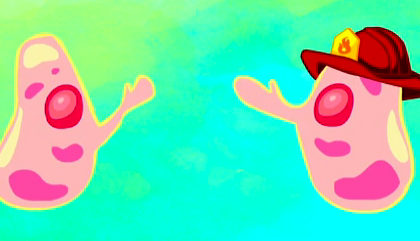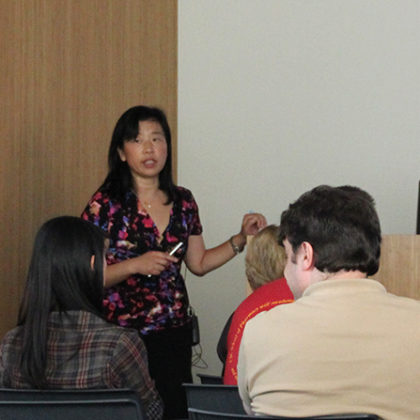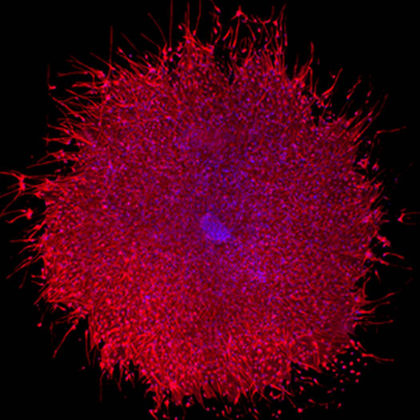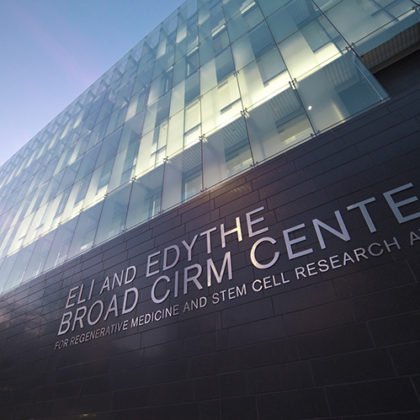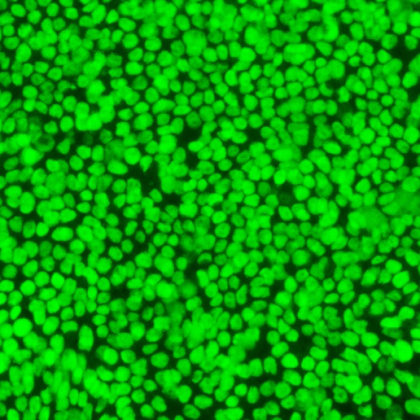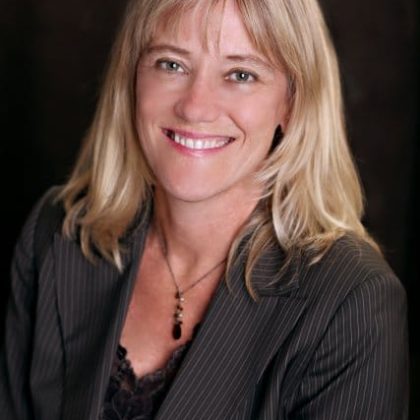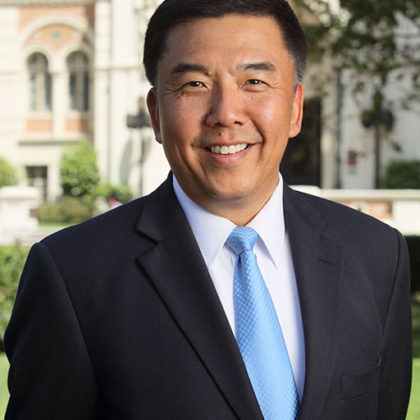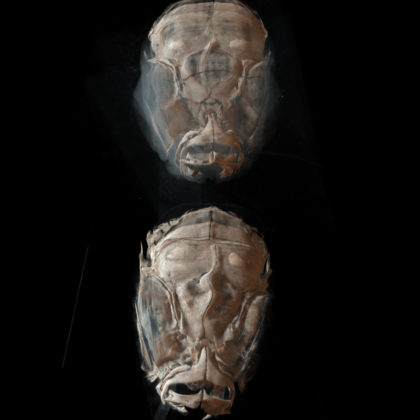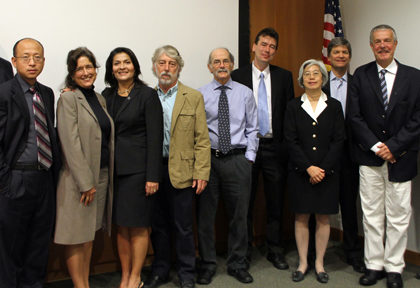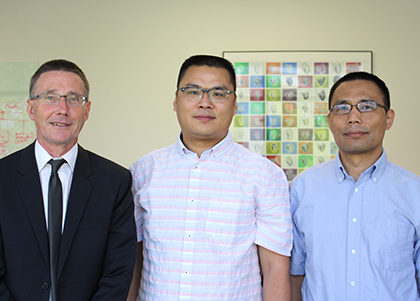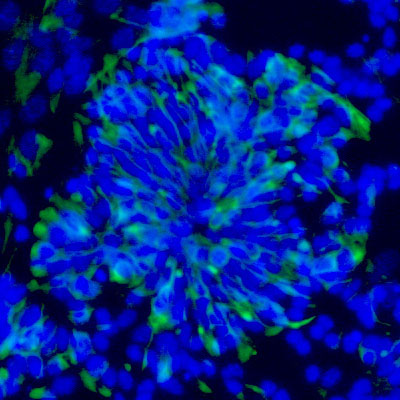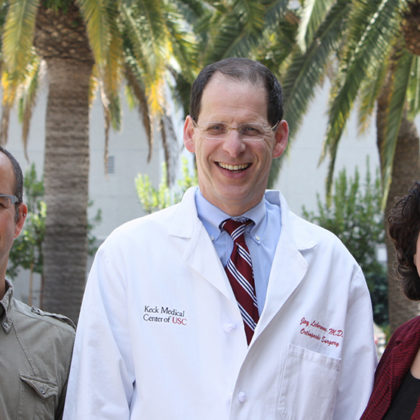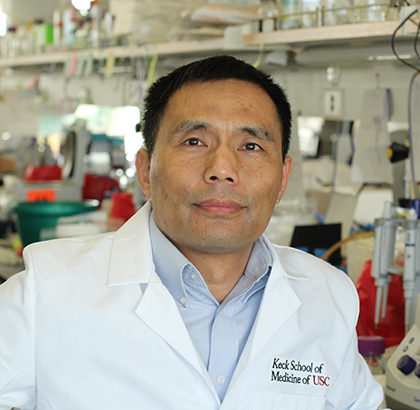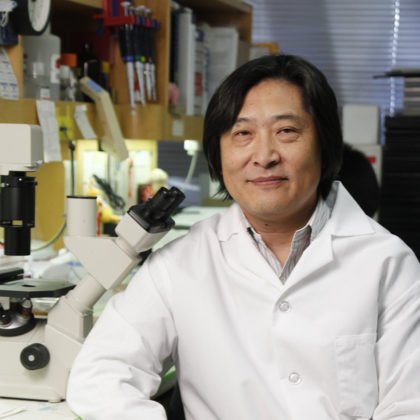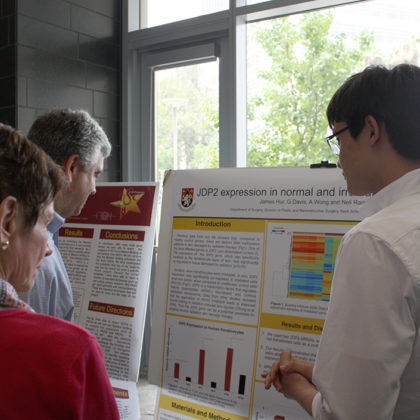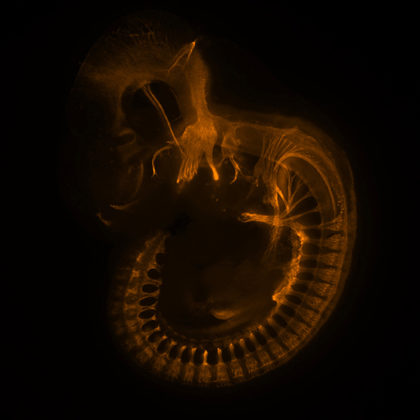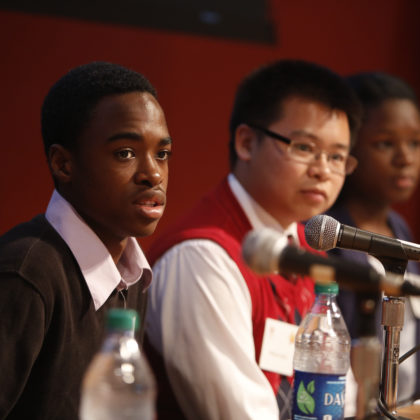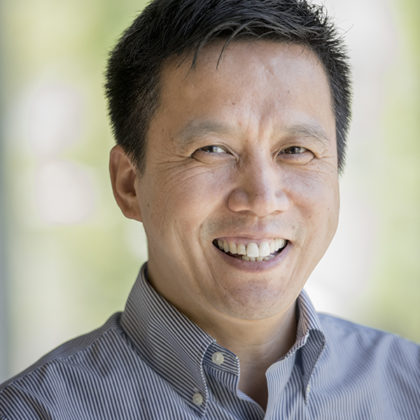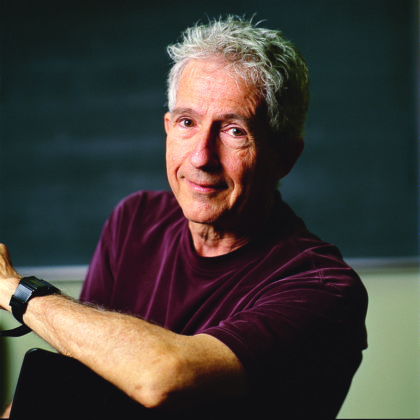USC Science Film Competition
Do you ever ask yourself life’s big questions: How can I become $3,000 richer? How can I break into the film industry? How can I impress Andy McMahon? The answer is that …
Pfizer’s J. Jean Cui explains modern drug discovery
Only five percent of potential cancer drugs make it from phase I clinical trail to FDA approval, but J. Jean Cui, PhD, associate research fellow at Pfizer, beat the odds. Cui visited …
USC professors receive NIH funding for clinical trial of Alzheimer’s drug
USC Professors Roberta Diaz Brinton of the USC School of Pharmacy and Lon Schneider of the Keck School of Medicine of USC are principal investigators of a newly funded study from the …
USC teams with CIRM to celebrate Stem Cell Awareness Day
For the millions of people around the world who suffer from incurable diseases and injuries, Stem Cell Awareness Day is a time for hope. In honor of the occasion, USC Stem Cell, …
USC researcher reveals how to better master stem cells’ fate
USC scientist Qi-Long Ying and a team of researchers have long been searching for biotech’s version of the fountain of youth — ways to encourage embryonic stem cells (ESCs) and epiblast stem …
Magnetic treatment for high-risk neuroblastoma proves less than attractive
Removing tumor cells with a magnet? It may sound strange, but researchers at Children’s Hospital Los Angeles (CHLA) and their colleagues recently explored whether this technique can create better outcomes for patients …
Ostrow School study links growth factor glitch to tongue defects
New findings about how cell signaling directs tongue development may have big clinical applications for healing tongue defects, according to an Ostrow School of Dentistry of USC study published in The Journal …
Winner of the August 2013 USC Stem Cell Image of the Month Contest
Dr. Andrew McMahon and the judges of the USC Stem Cell Image of the Month contest would like to congratulate our August 2013 winners, Dr. Seth Ruffins and Sandeep Paul, a postdoc …
First Zilkha Alzheimer’s Mini-Symposium examines vascular system connections
Alzheimer’s disease is the sixth leading cause of death in the United States, and more than five million Americans live with the disease, according to the Alzheimer’s Association. Conquering Alzheimer’s was the …
Businessman invests in stem cell research at USC
Chinese businessman Yong Chen has pledged $1 million to USC stem cell researcher Qi-Long Ying to support his future “eureka moments.” “When I talked to Mr. Chen, I told him that groundbreaking …
A special protein helps embryonic stem cells keep their options open
In the ongoing quest to understand how embryonic stem cells (ESCs) retain their ability to differentiate into virtually any kind of cell, USC faculty member Qi-Long Ying and a team of researchers …
USC announces winners of first Regenerative Medicine Initiative awards
Three newly assembled disease teams within USC Stem Cell will take the early steps this year that might lead to future stem-cell based therapies for certain forms of deafness, bone defects and …
A genetic catch-22 promotes and prevents liver cancer
Can the same gene prevent and promote cancer? When it comes to liver cancer, the gene that codes for P53, a protein found in humans and many other animals, involves this catch-22. …
Stem cells found in gum tissue can fight inflammatory disease
Stem cells found in mouth tissue can not only become other types of cells but can also relieve inflammatory disease, according to a new Ostrow School of Dentistry of USC study in …
2013 EiHS & CIRM STAR Colloquium and Poster Presentation
James Hur (right), a student from Harvard-Westlake School, describes his research on healing radiation wounds at the USC Early Investigator High School (EiHS) & USC CIRM Science, Technology and Research (STAR) Colloquium …
Winner of the July 2013 USC Stem Cell Image of the Month Contest
Dr. Andrew McMahon, Dr. Seth Ruffins and the judges of the USC Stem Cell Image of the Month contest would like to congratulate our July 2013 winner, Elisabeth Rutledge, a PhD student …
Forum kicks off USC’s summer high school programs in stem cell research
More than 20 local students are enjoying a summer of hands-on experience in stem research laboratories through the USC Early Investigator High School (EiHS) and the USC CIRM Science, Technology and Research …
USC professor presents Alzheimer’s findings at international conference
USC School of Pharmacy Professor Roberta Diaz Brinton, holder of the R. Pete Vanderveen Chair in Therapeutic Discovery and Development, presented her work on Allopregnanolone and the phase 1 trial that will …
USC study sheds light on stem cell reprogramming
Researchers are learning how to turn regular cells into stem cells, a process called reprogramming. However, some of the mechanisms of the process remain unknown, such as why only a small proportion of the cells can be reprogrammed. Researchers have at least part of the answer: the structure of genes.
Common genetic disease linked to father’s age
Scientists at USC have unlocked the mystery of why new cases of the genetic disease Noonan syndrome are so common—a mutation, which causes the disease, disproportionately increases a normal father’s production of …
